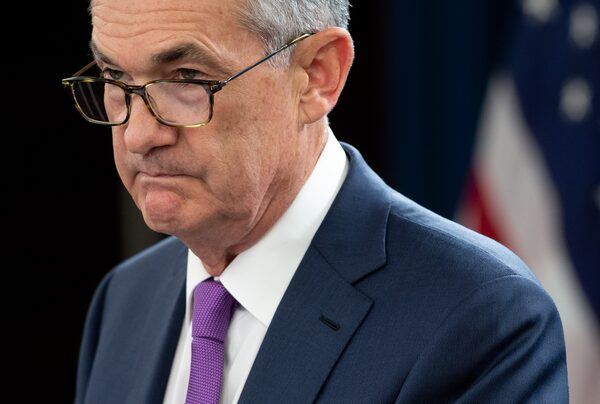Briefing highlights
- Behind the market turmoil
- Canadian dollar at about 76.5 cents
- What to make of Trump and the Fed
- A Marlboro billboard I’d love to see
- Stronach sues daughter Belinda
Behind the turmoil
It’s the kind of day that may have you wishing you didn’t have to wait another week for legal marijuana.
You can sum it up in three words: Capitulation, anticipation and mortification.
“You don’t see a day like that without people starting to panic,” said Jasper Lawler, head of research at London Capital Group, referring to Wednesday’s turmoil, which was followed by a continued rout today.
First, here’s where things stand now:
Markets started the morning on a sour note, but there was an immediate change in sentiment as investors digested the latest U.S. inflation numbers, only to change again as the day wore on, with markets in Asia, Europe and North America closing sharply lower.
Here’s the damage in North America:
Here’s what’s behind the trouble:
CAPITULATION
Investors are troubled by everything from mounting trade tensions to rising borrowing costs, with bond yields and the Federal Reserve’s rate-hiking cycle in focus.
This picked up steam last week when the yield on the 10-year U.S. Treasury spiked, rising again Wednesday before tapering off today.
Stocks had been running to fresh highs, but, said Mr. Lawler, traders capitulated after questioning whether they have the confidence to push markets even higher.

A man rests in front of boards showing stock prices at a securities company in Beijing on October 11, 2018esNICOLAS ASFOURI/AFP/Getty Images
The panic could be allayed in the short term, however, because stocks had been catching up to the moves in bond yields. But investors are now looking to buy bonds as a haven, which means prices rise and yields, which move inversely, are easing.
So if investors actually think things through, there’s likely less reason to be so troubled, Mr. Lawler said. Of course, he added, they won’t think it through.
“I think the nature of the beast is that we see some ups and downs,” Mr. Lawler said.
Key, too, is that corporate earnings season is literally around the corner, with major U.S. banks set to start reporting on Friday.
This could cause some jitters as American companies discuss the outlook, on how trade, currency valuations and other factors could affect them.
“Is this as good as it gets, I think is the earnings question here,” Mr. Lawler said.
ANTICIPATION
Markets are anticipating where borrowing costs are headed, which makes every twist and turn from the Federal Reserve so crucial to sentiment.
“Firstly, the rising trade tensions, as the U.S. reorients its trade policy, throughout this year has weighed on European and Asian markets where companies tend to be more weighted to exporting goods and services, and secondly, investors have slowly wised up to the fact that the slowdown being seen in the global economy is likely to trickle down into potentially lower profit margins at a time when central banks, particularly the Federal Reserve, are looking to normalize policy to prevent overheating a U.S. economy getting a bump from a significant fiscal boost,” CMC Markets chief analyst Michael Hewson.
Which is why this morning’s report on U.S. consumer prices had such an impact initially, showing annual inflation dropping to 2.3 per cent in September from 2.7 per cent a month earlier. Of course, that didn’t last long.
“The 12-month trends for the headline and core are steady’ish,” said Bank of Montreal senior economist Jennifer Lee.
“The three- and six-month trends have slowed for the core measure,” she added, referring to the measure that strips out volatile prices and helps guide the central bank.
“Although we can expect that consumers will be paying higher prices in the coming year, the latest inflation data do not light any fires under the monetary policy makers to move faster. But the Fed will remain on their steady tightening course, with the next move in December.”
The U.S. central bank is moving steadily off its crisis-era lows, and anything that suggests potential levels and timing can get the market’s blood boiling.

Federal Reserve chairman Jerome PowellSAUL LOEB/AFP/Getty Images
Markets, added Kit Juckes of Société Générale, are betting the central bank will “soften its tone” should the market spiral continue.
“For much of 2018, the U.S. economy has been oblivious to a turn in the global economic cycle, and the U.S. equity market has been unaffected as emerging market equities and currencies have come under pressure,” Mr. Juckes said.
“This week has seen the S&P, and the Nasdaq, sit up and pay attention to what’s going on,” he added.
“The president’s criticism of the Fed adds colour, but no real substance, to the situation. It has long been assumed by market participants that when global market malaise finally transfers to the U.S., the Fed will pay attention and the dollar’s rally will start to run out of steam.”
We’ll see how currencies play out.
“Markets are trapped between classic risk-off (equities lower, yields lower) and a more dangerous twin bond/equity selloff (equities lower, yields higher),” said Elso Lignos, Royal Bank of Canada’s head of foreign exchange strategy in London.
“Which of the two wins out should determine how long the equity selloff lasts, and also what it means for [foreign exchange]."
MORTIFICATION
Well, it’s not every day that you get to hear a U.S. president call the central bank “loco.”
That’s downright mortifying on several fronts, notably a politician trying to fiddle with monetary policy by pressuring central banks.

President Donald Trump pauses as he speaks at a campaign rally at Erie Insurance Arena, Oct. 10, 2018, in Erie, Pa.Evan Vucci/The Associated Press
President Donald Trump, who doesn’t shy away from anything, no matter the conventions, took after the Fed again Wednesday, warning that interest rates were climbing too fast.
“While we have become used to the sound of President Trump saying what he thinks, his change of tone comes across as rather unseemly at a time when G7 leaders generally refrain from criticizing their central bankers,” Mr. Hewson said.
“It is true that President Trump is no ordinary president, however it is never a good look to accuse your independent central bank of being crazy. It is the sort of behaviour or of language that tends to come from more authoritarian leaders.”
Read more
- Follow our Inside the Market
- The 40-year-old virgin: When you’ve never experienced a bear market in bonds
- Trump calls stock market sell-off ‘a correction,’ says Federal Reserve has gone ‘crazy’
- What market strategists are saying about Wednesday’s big selloff
A billboard I’d love to see

Photo illustration
Read more
- Christina Pellegrini, Marina Strauss: Marlboro maker Altria in talks with Canadian pot grower Aphria
More news
Insight
Inside the Market
In case you missed it
 Michael Babad
Michael Babad